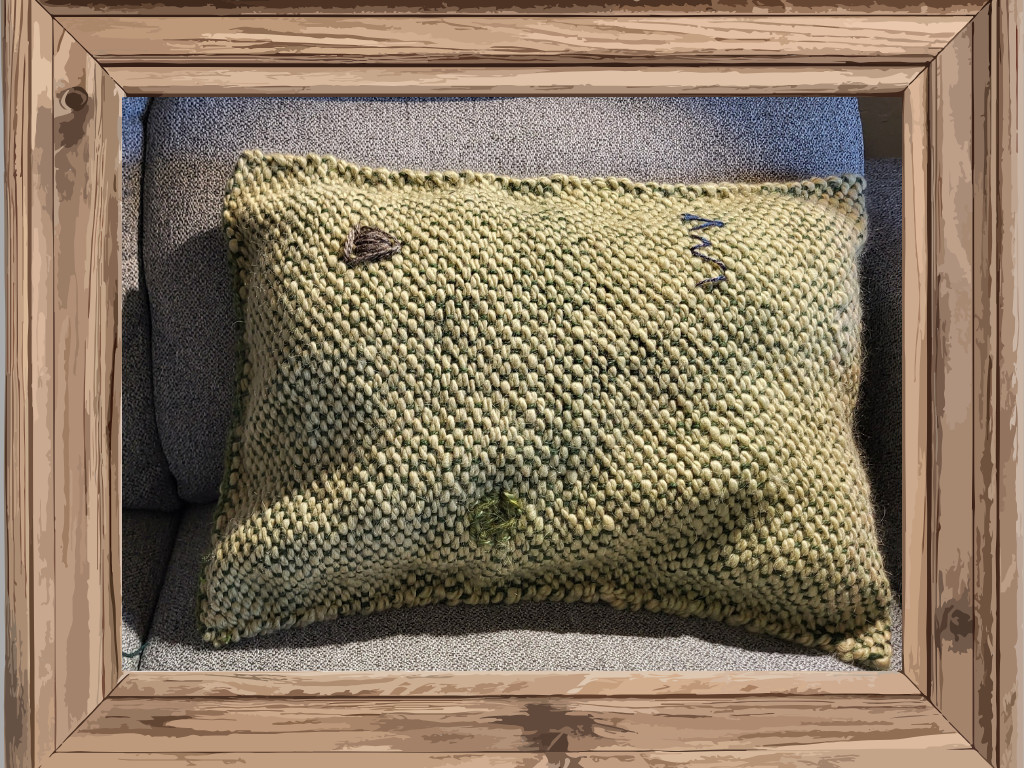I’m so excited about the big new shipment of handmade silk scarves and silver jewelry which arrived yesterday from the studio of Seven Sisters in Bishkek, Kyrgyzstan! Some of our favorite products were out of stock–including our perennially best-selling Felted Silk Shawl-Red Poppies on Black–and now they are finally back on hand for the holiday season! In addition to restocking our favorite handmade felted silk scarves, we also have a new collection of eco-printed scarves in many colors as well as Zhanyl’s most popular silver earring styles.
We put together this little preview video for you to whet your appetite. To see what’s available, you can check out Kyrgyz Felted Silks, Eco-Printed Silk Scarves, and Jewelry. And we have a few brand-new scarf and jewelry designs, so you can find those in our New Products collection. (We may not have the inventory fully updated when the newsletter goes out on Friday, so check back in a couple of days.)
Seven Sisters Carry On Cultural Heritage
The Seven Sisters treasures are all a reflection of their deep connection to their cultural heritage. Farzana Sharshembieva from Kyrgyzstan is the oldest of seven sisters (actually, 6 sisters and a sister-in-law) crafting hand-felted silk scarves and apparel that are layered, mottled felt products in the tradition of "ala-kiyis."

At HoonArts, I have always worked most closely with Zhanyl, sister number 5, who is the English-speaker of the group. She also happens to be the designer of the poppy scarves and is the only sister who does jewelry. We first met at the Santa Fe International Folk Art Market in July 2015, when I was a volunteer at her booth for the entire weekend.

Rikki Quintana and Zhanyl Sharshembieva, July 2015
For more than 15 years, the sisters have worked together, pressing vibrant felt into the rippling designs that tell stories of their culture. Farzana has also recently created her own separate brand for her most modern designs. Today, the sisters’ work is able to support their large extended family and provide much-needed income for their assistants.
“Our love for this work was instilled by our grandmother, a famous skilled worker,” says Farzana. The sisters can remember, as children, watching their grandmother lay patterns down on the carpet, and listening as she explained the legends associated with each design.
“In Kyrgyz ornaments,” Farzana explains, “you can see the distinct history and lifestyles of the ancient nomads in hunting scenes. Our products depict flora and fauna in signs and symbols that have sacred meanings.” Ancient Kyrgyz worshiped the forces of nature, the sun and fire. “Patterns celebrate the beauty of nature, which has magical value that protects and blesses.”
The sisters’ parents were also their teachers. Their father was a master saddle-maker, and their mother embroidered. Both taught at art colleges. “They devoted all their lives to creativity,” Farzana says. “Our dad is our main teacher and critic.” His ancestors were artisans—jewelers, blacksmiths, and furriers. The sisters represent the sixth generation of artisans in their family.
It was the sisters’ aunt, Kenzhe Toktosunova, who taught them ala-kiyis, a traditional Kyrgyz method that involves layering felts of different weights and colors. The process is extremely labor-intensive, requiring intricate cutting and stitching as well as multiple soakings, rollings, and rinsings. The result is a durable, distinctive textile.

Toktosunova also taught the sisters how to wheel the felt into silk, and the incorporation of that airy material “gave our traditional ornaments a new life.” Before, their heavy, layered felt pieces served as carpets. The silk lent itself to scarves and other light, wearable pieces. For each one, the sisters use silk purchased in Uzbekistan and the southern regions of Kyrgyzstan, and wool from Kyrgyzstan.
“In our work,” Farzana says, “we try to preserve and pass on the spirit of the Kyrgyz people.” Their designs encourage us not to lose sight of our primordial respect for the environment. Beyond that, the sisters’ pieces remind younger generations of traditional Kyrygz customs and designs. Felt is both a part of everyday life in Kyrgyzstan, and also a marker of national holidays and festivities, of wedding celebrations and funerals.
The sisters feel blessed. “We create beautiful things for a living,” explains Farzana. Their work provides them opportunities to exhibit in different countries and to explore, appreciate, and incorporate the beauty and complexity of other cultures into their pieces. Still, the part of their work they love most happens at home: spreading pieces of felt and silk on the floor and imagining the designs to come and the ancient stories to be told.
We created this short video to give you an overview of the felting process employed by Seven Sisters in their work. These photos and video clips were captured during two different live master classes taught by Zhanyl, one in Albuquerque in 2018 and one in Bishkek (to our tour group last fall). Enjoy!







Leave a comment